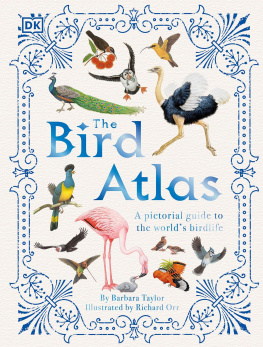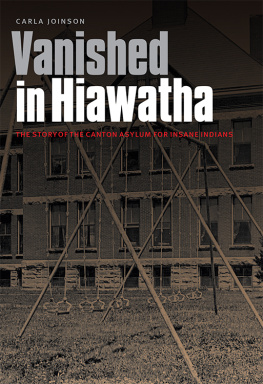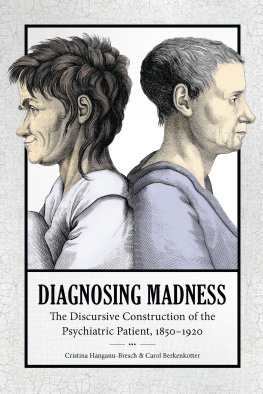THE LAST ASYLUM
By the same author
Eve and the New Jerusalem: Socialism and Feminism in the Nineteenth Century
Mary Wollstonecraft and the Feminist Imagination
On Kindness (with Adam Phillips)
Women, Gender and Enlightenment, 16501850 (ed. with Sarah Knott) History & Psyche: Culture, Psychoanalysis and the Past
(ed. with Sally Alexander)
THE LAST ASYLUM
A Memoir of Madness in Our Times
Barbara Taylor

For Lise
CONTENTS
PROLOGUE
November 2002. I put on a skirt and jacket and head up to Friern Barnet, in the north London suburbs. Princess Park Manor is a palatial apartment complex on the south side of Friern high street. The sharp-suited woman in the sales hut by the Manors front gate seems excited by my visit. Maybe sales have been slow? This is not a well-heeled neighbourhood; will anyone who can pay a half-million for a two-bedroom flat really want to live here? I flip through the glossy brochures, check the location of the show apartments, and head along a flower-lined path towards the main building. The wide lawn glistens in the morning light; a squirrel chatters in a cedar. When I am out of sight of the sales hut I leave the path and walk across the lawn to a door on the buildings far right. The door opens into a sunny corridor with polished wooden floors. For a moment Im disoriented, then I walk along the corridor until a staircase appears on my left. I climb to the first floor, on to a small landing with a numbered door. I go over to the door and stand there. Sounds from within? No, nothing. No footsteps, no cries, no rattle of keys... Silence. So we have really been exorcized then? Not even the echoes of our voices trapped in the walls? Surely the stench of our cigarettes, our endless cigarettes, must still be detectable? But all I can smell is fresh paint and floor polish.
I go back downstairs and make my way to a couple of show flats. At first I cant understand what I find in them: galleries going nowhere, cubbyhole bedrooms with arched ceilings, windows spanning two floors, lots of odd corners. Many of the rooms are womb-like: long, narrow entrances abruptly opening into windowless spaces. Everything is decorated in mass-market chic: dark green leather sofas; marble busts on glass shelves; poster-shop prints in shiny frames. Gradually, like reassembling a picture puzzle, I begin to make out a bit of corridor here, an original ceiling there. I start to see how its been done and abruptly lose interest. I go back to the sales hut, smile discouragingly at the sharp suit, and head back home.
Princess Park Manor was my loony bin, my nuthouse. In the late 1980s I spent nearly eight months there. None of the sales literature mentions the Manors previous incarnation as Friern Hospital, yet in its own way it was top-drawer even then. Entering it for the first time in July 1988, I found myself in what had once been Englands biggest and most advanced psychiatric institution: the Middlesex County Pauper Lunatic Asylum at Colney Hatch, or Colney Hatch as Friern was universally known until the mid-twentieth century. Like nearly all of Britains old asylums, the hospital was slated for closure. A few days after my admission, my friend the historian Raphael Samuel had come to visit me. He looked around the vast, drab ward with undisguised fascination and embraced me. Darling Barbara! What a privilege for you, as a historian, to be present at the demise of one of the last great Victorian institutions! His words both annoyed and amused me, but they lodged inside me and this book is the result.
I had always been unhappy. Moving from Canada to London, aged twenty-one, I had thought to leave my unhappiness behind me. But it travelled with me, and in my late twenties it took a frightening turn. I became horribly anxious, unable to sleep, plagued by mysterious bodily symptoms. In 1981, when I was thirty-one, I broke down entirely for a time and decided to seek help. Many of my friends were in psychotherapy, so this became my route. In 1982 I began seeing a psychoanalyst. Within three years I had lost all semblance of ordinary life; three years further on I was admitted to Friern. I spent nearly four years in the mental health system, either as an inpatient or a day patient. While I was in Friern I lost my home, and went to live in a psychiatric hostel. By then my world had contracted around my illness and I believed I would be a lifelong mental patient.
This was not to be my fate. But if it had been, what then? What would the rest of my life have been like?
This book is, in part, an attempt to answer this question. My years as a mental patient coincided with a revolution in the psychiatric health system. Right across the western world, people with mental disorders were being decanted out of the old asylums into the community. I was formally discharged in 1992. Friern closed the following year. By the end of the decade nearly all the mental hospitals had gone. I had lived through the twilight days of the Asylum Age. I was half aware of this at the time, and occasionally felt very anxious about what would become of me. But mostly these changes, inasmuch as I was conscious of them, just fed my sense of personal despair. After all, I was doomed anyway, so this hospital, that day centre, no hospital, no day centre what difference would any of it make to me?
Yet unlike most people who lived through this transition, I had another resource to hand. All the time I was in psychiatric institutions I was also continuing to see my psychoanalyst, five times a week. This was a fraught therapeutic relationship which in the summer of 1990 went through a crisis that proved transformative. Gradually, with much grizzling and many back-steps, I moved out of the hell that I had been inhabiting. In 1993 I got a job at a London university; in the late 1990s I acquired a partner and a family, and found myself with a life that I wanted to lead. I have been living it ever since.
The Last Asylum is the story of my madness years, set inside the story of the death of the asylum system in the late twentieth century. The book is a historical meditation on mental illness: primarily my own illness, but also that of the millions of other people who have suffered, are suffering, will suffer from mental illness. The changes that have transformed mental health care have been highly controversial. Some people applaud them as progressive alternatives to institutional care, while others condemn them as cost-cutting exercises ). The demise of the asylum has reconfigured this conflict without diminishing it, and it continues to reverberate throughout psychiatric services. This book explores this conflict, not in order to resolve it but to show its importance for past and present understandings of mental illness and healing.
So The Last Asylum is a work of history my own and many other peoples. It is also a book about the work of turning the personal past into history. The lived past is never really past; it endures in us in more ways than we understand. Sometimes it doesnt even feel like the past; it just feels like life itself, like the way things have always been and always will be, now as before, then and for ever. For many people, experiencing the past as past, allowing it to become truly historical, is very difficult. It involves uncovering aspects of our lives, especially our early lives, that we have forgotten or have never really known about, except perhaps as occasional spasms of mind or body, disturbing dreams, strange movements in the blood... sequelae of things that have happened to us, or might have happened to us, or we imagine happened to us, hidden beneath our remembered pasts. The sources of self run deep. In my case, exploring them required me to become a historian of my own life, through the peculiar and demanding labour of a long-term psychoanalysis, of which
Next page








